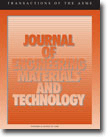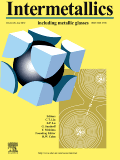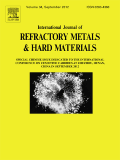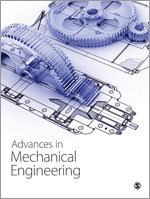
Advances in Materials and Processing Technologies
Scope & Guideline
Driving Progress in Materials and Manufacturing
Introduction
Aims and Scopes
- Material Characterization and Properties:
Research that investigates the mechanical, thermal, and electrical properties of materials, including composites, metals, polymers, and ceramics. - Advanced Manufacturing Processes:
Studies focusing on innovative manufacturing techniques such as additive manufacturing, laser processing, and advanced welding methods, aimed at improving efficiency and material properties. - Sustainable and Green Materials:
Research on eco-friendly materials and processes, including the use of bio-based composites and recycling technologies to minimize environmental impact. - Nanotechnology and Materials Engineering:
Explorations into the applications of nanomaterials and nanocomposites, studying their unique properties and potential uses in various applications. - Computational Modeling and Simulation:
Studies employing computational methods to predict material behavior, optimize processing parameters, and simulate manufacturing processes. - Tribology and Wear Behavior:
Research focused on the friction, wear, and lubrication properties of materials, particularly in the context of engineering applications.
Trending and Emerging
- Additive Manufacturing and 3D Printing:
There is an increasing trend in research dedicated to additive manufacturing technologies, focusing on material optimization, process parameters, and innovative applications in various industries. - Hybrid and Composite Materials:
A growing interest in the development and characterization of hybrid and multi-material systems, which combine different types of reinforcements to enhance mechanical properties and functionality. - Smart Materials and Functional Coatings:
Emerging research on materials that respond to environmental stimuli, including self-healing materials and coatings with specific functionalities, such as antibacterial properties. - Sustainable Manufacturing Practices:
A significant increase in studies focusing on sustainable practices in material processing, including life cycle analysis, eco-friendly materials, and green manufacturing techniques. - Machine Learning and AI in Materials Engineering:
The integration of artificial intelligence and machine learning techniques in materials research for optimizing processes and predicting material behaviors is on the rise.
Declining or Waning
- Traditional Metalworking Techniques:
Research related to conventional machining methods, such as turning and milling, has decreased as interest shifts towards advanced and automated manufacturing techniques. - Basic Material Processing Techniques:
Studies focusing on foundational material processing methods are becoming less prominent as the field advances towards more complex and technologically integrated processes. - Non-Mechanical Properties:
Research that emphasizes purely theoretical or non-mechanical aspects of materials, such as chemical composition without connection to processing or application, is becoming less common.
Similar Journals

Materials Physics and Mechanics
Advancing the Frontiers of Materials ScienceMaterials Physics and Mechanics is a pivotal journal dedicated to advancing the fields of condensed matter physics, materials science, mechanical engineering, and the mechanics of materials. Published by the Institute of Problems in Mechanical Engineering, Russian Academy of Sciences, this journal has established itself as a valuable resource since its inception, particularly from 2003 to 2004 and now continuously from 2009 to 2024. Although it currently holds a Q4 categorization in various disciplines, its contributions are critical to understanding and developing new materials and their applications in engineering. The journal provides insightful articles that explore the nuances of material properties, their behaviors under different conditions, and the physical principles governing these phenomena. Though it operates under a traditional publication model, the insights provided within its pages are invaluable to researchers, professionals, and students striving to push the boundaries of knowledge in the materials domain. Its ISSN numbers (1605-2730, E-ISSN 1605-8119) serve as a gateway to a wealth of scientific knowledge emanating from the Russian Federation, contributing to the global discourse in materials physics and mechanics.

JOURNAL OF ENGINEERING MATERIALS AND TECHNOLOGY-TRANSACTIONS OF THE ASME
Connecting researchers and practitioners in the realm of engineering innovation.JOURNAL OF ENGINEERING MATERIALS AND TECHNOLOGY-TRANSACTIONS OF THE ASME is a premier journal published by the American Society of Mechanical Engineers (ASME), dedicated to advancing the field of engineering materials and technology. With an ISSN of 0094-4289 and E-ISSN 1528-8889, this journal has provided invaluable insights since its inception in 1973. Operating from its headquarters in New York, United States, it serves a global audience of researchers, professionals, and students alike. The journal is recognized for its rigorous peer-review process and its commitment to disseminating high-quality research, currently holding a Q3 quartile ranking across multiple categories including Condensed Matter Physics, Materials Science, Mechanical Engineering, and Mechanics of Materials. With a focus on exploring innovative materials and their applications, it aims to foster collaboration and discovery in the engineering community. Although it is not an open-access journal, it continues to play a vital role in shaping the future of engineering materials research up to 2024. Researchers and practitioners will find in this journal a significant platform to support the development and understanding of engineering materials, making contributions that resonate through academia and industry.

Cailiao Gongcheng-Journal of Materials Engineering
Empowering Research for Tomorrow's MaterialsCailiao Gongcheng-Journal of Materials Engineering, published by the Beijing Institute of Aeronautical Materials (BIAM), is a prominent open-access journal dedicated to advancing the field of materials engineering. Since its inception in 1993, this journal has provided a platform for researchers and professionals to share innovative studies and findings within various subfields including aerospace engineering, metals and alloys, polymers and plastics, and surface engineering. With a commitment to open access since 2012, Cailiao Gongcheng ensures that research is accessible to a global audience, facilitating knowledge dissemination and collaboration. Ranking in the Q4 quartile across multiple categories, the journal serves as a vital resource for those invested in the latest developments and applications of materials technology. The journal's coverage extends up to 2024, reinforcing its relevance in an ever-evolving landscape of materials science.

JOURNAL OF MATERIALS ENGINEERING AND PERFORMANCE
Elevating Standards in Mechanical Engineering ResearchJOURNAL OF MATERIALS ENGINEERING AND PERFORMANCE, published by Springer, serves as a vital resource for researchers and professionals in the fields of materials science, mechanical engineering, and mechanics of materials. With an ISSN of 1059-9495 and E-ISSN of 1544-1024, this journal boasts a commendable track record since its inception in 1992 and is set to continue providing valuable insights until 2024. Positioned in the Q2 quartile of its categories, the journal is ranked #246 in Mechanical Engineering and #168 in Mechanics of Materials according to Scopus, reflecting its commitment to high-quality research. While currently not adopting an open access model, it remains accessible to academic professionals and students eager to advance their knowledge in the rapidly evolving domain of materials engineering. The scope encompasses innovative research focused on material performance, engineering applications, and technological advancements, making it an indispensable tool for those at the forefront of the field.

INTERMETALLICS
Exploring the Depths of Intermetallic InnovationINTERMETALLICS, a prestigious journal published by ELSEVIER SCI LTD in the United Kingdom, has been a vital resource in the fields of Materials Science, Mechanical Engineering, and Chemistry since its inception in 1993. Renowned for its rigorous peer-review process and commitment to high-quality research, this journal enjoys an impressive position within the top quartile (Q1) rankings of its categories, signifying its influence and esteem in the academic community. With a particular emphasis on the study of intermetallic compounds and their applications, INTERMETALLICS attracts groundbreaking research and innovative contributions that push the boundaries of knowledge in metals and alloys, as well as mechanics of materials. Researchers looking for a platform to disseminate cutting-edge findings will find this journal an exemplary choice, further enhanced by its commendable Scopus rankings that illustrate its widespread recognition and relevance. Though it does not currently offer Open Access options, the journal remains committed to advancing the field through selective publication of impactful research, making it an essential reference for researchers, professionals, and students alike interested in the dynamic interplay between materials and engineering.

Nuclear Materials and Energy
Empowering Knowledge in Nuclear Science and MaterialsNuclear Materials and Energy is a premier open-access journal published by Elsevier, dedicated to the dynamic fields of nuclear science and materials engineering. Since its inception in 2015, the journal has made significant strides in disseminating cutting-edge research, establishing itself as a vital resource for researchers and professionals alike. With a commendable impact factor and ranked in the Q2 category for both Materials Science (miscellaneous) and Nuclear and High Energy Physics, and impressively in Q1 for Nuclear Energy and Engineering in 2023, Nuclear Materials and Energy stands out in the academic community. This journal aims to bridge the gap between fundamental research and practical applications, promoting innovative solutions in the efficient utilization of nuclear materials and energy technologies. Open access since 2015, the journal ensures wide dissemination and accessibility of crucial findings, making it an essential platform for advancing knowledge and fostering collaboration in these pivotal fields.

INTERNATIONAL JOURNAL OF REFRACTORY METALS & HARD MATERIALS
Leading the way in high-impact materials research.INTERNATIONAL JOURNAL OF REFRACTORY METALS & HARD MATERIALS, an esteemed publication by Elsevier Science Ltd, stands at the forefront of materials research, focusing on the development and application of refractory metals and hard materials in various engineering fields. With an impressive impact factor and recognition as a Q1 journal across several categories including Ceramics and Composites, Materials Chemistry, and Mechanical Engineering, it serves as a vital resource for researchers, professionals, and students alike. The journal has been continuously publishing high-quality research since its inception in 1982, with a convergence of developments spanning through to 2024. Its Scopus rankings further emphasize its significance, boasting ranks in the top percentiles of relevant scientific fields. Although it operates under a subscription model, the depth and rigor of the research published within its pages ensures that it remains an invaluable tool for those pursuing innovation and exploration in materials science.

Advances in Mechanical Engineering
Driving Innovation in Mechanical EngineeringAdvances in Mechanical Engineering is a premier open-access journal published by SAGE Publications Ltd, dedicated to the advancement of theoretical and applied research in the field of mechanical engineering. With an ISSN of 1687-8132 and an E-ISSN of 1687-8140, this journal has been a vital resource for scholars and practitioners since its inception in 2009. Housed in the United States, it operates under a commitment to ensure free and immediate access to its high-quality content, enhancing collaboration and innovation across the global engineering community. With a noteworthy Q2 ranking in the mechanical engineering category and a solid Scopus rank placing it in the 59th percentile, the journal serves as an influential platform for cutting-edge research, theoretical advancements, and comprehensive reviews. As the field evolves, Advances in Mechanical Engineering continues to cater to the rigorous needs of researchers, professionals, and students, striving to transform knowledge into tangible engineering solutions. This journal's commitment to excellence makes it a significant contributor to the mechanical engineering field, encouraging dynamic discussions and implications for the future.

INTERNATIONAL POLYMER PROCESSING
Fostering Collaboration in Chemical and Materials SciencesINTERNATIONAL POLYMER PROCESSING, published by WALTER DE GRUYTER GMBH, serves as a crucial platform for professionals and researchers in the fields of Chemical Engineering, Industrial and Manufacturing Engineering, and Materials Science, particularly focusing on polymers and plastics. With its ISSN 0930-777X and E-ISSN 2195-8602, this journal has been in circulation since 1988 and continues to expand its contributions to contemporary research trends through to 2024. Ranking in the third quartile across multiple categories, including Chemical Engineering (miscellaneous) and Materials Chemistry, it offers insightful and rigorous peer-reviewed articles that enhance the understanding of polymer processing technologies and innovations. This journal is vital for anyone engaged in polymer science and engineering, providing both theoretical and practical perspectives that advance the field. Although it does not provide open access, the journal's content is indispensable for academia and industry professionals looking to stay at the forefront of polymer research.

METALLURGICAL AND MATERIALS TRANSACTIONS A-PHYSICAL METALLURGY AND MATERIALS SCIENCE
Showcasing Breakthroughs in Condensed Matter PhysicsMETALLURGICAL AND MATERIALS TRANSACTIONS A - PHYSICAL METALLURGY AND MATERIALS SCIENCE, published by Springer, is a prestigious journal that plays a pivotal role in advancing the fields of physical metallurgy and materials science. With an ISSN of 1073-5623 and an E-ISSN of 1543-1940, this American journal provides a vital platform for disseminating cutting-edge research and innovative findings relevant to condensed matter physics, mechanics of materials, and metals and alloys. The journal, indexed with an impressive Q1 ranking in multiple categories in 2023, ensures its position among the top-tier publications, making it an essential resource for researchers, professionals, and students alike. Spanning decades of invaluable contributions since its inception in 1975, METALLURGICAL AND MATERIALS TRANSACTIONS A focuses on fostering academic dialogue, promoting collaboration, and showcasing leading-edge discoveries that drive the materials science community forward. Researchers seeking to publish their work in a highly visible forum will find this journal an optimal choice for reaching a discerning audience.